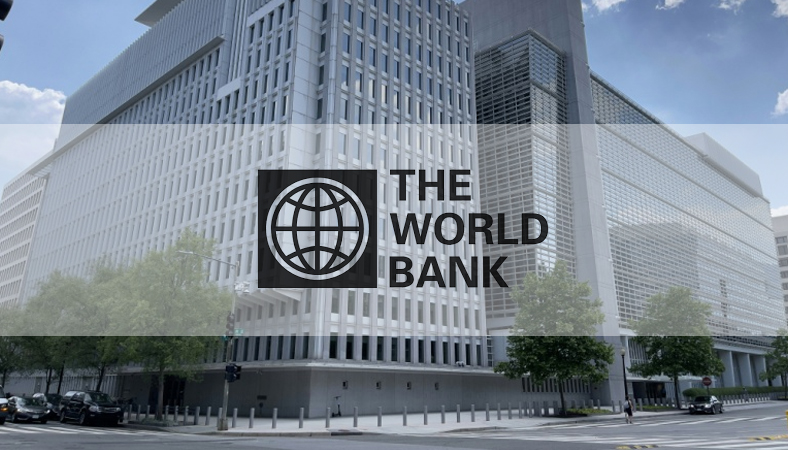News Flash
News Flash

DHAKA, April 23, 2025 (BSS) - Stepping up domestic revenue mobilization could
help the South Asia region strengthen fragile fiscal positions and increase
resilience against future shocks, said the World Bank (WB) in its twice-
yearly regional outlook.
Released today, the latest South Asia Development Update, Taxing Times,
projects regional growth to slow to 5.8 percent in 2025-- 0.4 percentage
points below October projections-- before ticking up to 6.1 percent in 2026.
This outlook is subject to heightened risks, including from a highly
uncertain global landscape, combined with domestic vulnerabilities including
constrained fiscal space.
It said amid increasing uncertainty in the global economy, South Asia's
growth prospects have weakened, with projections downgraded in most countries
in the region.
"Multiple shocks over the past decade have left South Asian countries with
limited buffers to withstand an increasingly challenging global environment,"
said Martin Raiser, WB vice president for South Asia.
"The region needs targeted reforms to strengthen economic resilience and
unlock faster growth and job creation. Now is the time to open to trade,
modernize agricultural sectors, and boost private sector dynamism," he added.
A key component of strengthening economic resilience will be domestic revenue
mobilization. Although tax rates in South Asia are often above the average in
developing economies, most tax revenues are lower.
On average during 2019-23, government revenues in South Asia totaled 18
percent of GDP-below the 24 percent of GDP average for other developing
economies.
Revenue shortfalls are particularly pronounced for consumption taxes but are
also sizable for corporate and personal income taxes.
Tax revenues in South Asia are estimated to be 1 to seven percentage points
of GDP below their potential, based on existing tax rates.
Some of this shortfall is explained by the widespread informality and large
agricultural sectors in the region. However, even after taking this into
account, sizable tax gaps remain, highlighting the need for improved tax
policy and administration.
"Low revenues are at the root of South Asia's fiscal fragility and could
threaten macroeconomic stability, especially in times of elevated
uncertainty," said Franziska Ohnsorge, WB chief economist for South Asia.
"South Asian tax rates are relatively high, but collection is weak, leaving
those who pay taxes with high burdens and governments with insufficient funds
to improve basic services," she added.
The report recommends a range of policies to improve tax revenues by
eliminating loopholes, streamlining tax codes, tightening enforcement, and
facilitating tax compliance.
This includes paring back tax exemptions; simplifying and unifying the tax
regime to reduce incentives to operate in the informal sector; and using
digital technology to identify taxpayers and facilitate collection.
The report notes the potential of adopting pollution pricing, which could
help address the high levels of air and water pollution while raising
government revenues.
Highlighting the country outlooks, it said in Bangladesh, growth is expected
to slow in FY24/25 to 3.3 percent amid political uncertainty and persistent
financial challenges, and the growth rebound in FY25/26 has been downgraded
to 4.9 percent.
In India, growth is expected to slow from 6.5 percent in FY24/25 to 6.3
percent as in FY25/26 as the benefits to private investment from monetary
easing and regulatory streamlining are expected to be offset by global
economic weakness and policy uncertainty.
In Pakistan, the economy continues to recover from a combination of natural
disasters, external pressures, and inflation, and is expected to grow by 2.7
percent in FY24/25 and 3.1 percent in FY25/26.
The regional outlook said in Bangladesh, real GDP growth moderated to 4.2
percent in FY23/24 from 5.8 percent in FY22/23, primarily driven by a sharp
decline in exports.
It said supply chain disruptions, combined with currency depreciation and
rising domestic energy prices, added to inflation pressures in 2024.
The current account balance has improved as a result of rising exports and
strong remittance inflows, which have increasingly been channeled through the
formal financial system as the curb market premium has narrowed.
As a result of persistent inflationary pressures, Bangladesh's central bank
has continued tightening monetary policy when other countries have been
lowering policy rates.
After several years of large swings in growth caused by the pandemic and the
post-pandemic recovery, three countries in the region-- Bhutan, India and
Nepal-- are now growing at rates broadly consistent with their 2010-19
averages.
The other five countries-- Afghanistan, Bangladesh, Maldives, Pakistan, and
Sri Lanka--are recovering from, or in the midst of, economic stress or
political uncertainty.
Inflation is expected to remain stable and near official targets in most
South Asian countries, assuming continued stability in commodity prices and
exchange rates.
Inflation is expected to moderate in countries where it is currently
unusually high (Bangladesh) or low (Sri Lanka) as the impact of temporary
factors such as tax rate changes or currency depreciations fades.
In Bangladesh, real GDP is expected to gradually rise in the medium term,
however, driven by critical reforms.